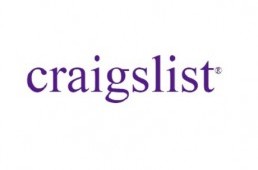
December 9, 2016 | by Michael Wilt
Categories: Affordable Housing, Rental Housing
Craigslist is where many Americans flock to for deals on used items, tickets to events, and maybe even to find a job. It's also where many people turn to when looking for a place to rent, searching countless listings in hopes of finding the perfect apartment or home.
These listings served another purpose altogether for a pair of University of California, Berkeley researchers who mined through 11 million Craigslist rental listings and unearthed some key findings about rental markets across the country. Their entire research paper can be found here, but one of the researchers, Geoff Boeing, shared these four key takeaways on his blog:
Craigslist listings correspond reasonably well with Department of Housing and Urban Development (HUD) fair market rent estimates, and provide up-to-date data including unit characteristics, from neighborhood to national scales. For example, we can see how rents are changing, neighborhood by neighborhood, in San Francisco in a given month.
Let's take a closer look at the last takeaway, because it offers two insights that implicate affordable housing.
First, the research paper compared HUD's fair market rent estimates (what HUD thinks the average rent should be based on its 50th percentile rent estimates) in metro areas to the median rent of Craigslist listings in those same metro areas. In Dallas, for example, the HUD rent estimate is $1114 for a two-bedroom apartment, and Craigslist listings in Dallas on average are 1.36 that amount or $1515.
In Austin, Craigslist listings are 1.16 higher than HUD's estimates for a two-bedroom apartment, and in Houston, they are 1.03 higher. San Antonio is the only major metro area where Craigslist listings are barely lower than HUD's fair market rent estimate for a two-bedroom apartment by a mere one-hundredth of a point (.99).
So, while you may find a great deal for a used bike on Craigslist, you might not have as much luck if you're looking for an affordable place to live.
Second, the sheer volume of Craigslist listings and availability of data across the country on a macro and micro scale allows housing experts to see on a regional level or down to a neighborhood level where more affordable housing is needed.
Also, while these researchers used Craigslist listings between May and July 2014, their methodology could be used over any timeframe to get an up to date snapshot of a rental market. As the research paper notes, this real-time data can "fill a pressing need for planners to measure local-scale rental markets ... and proactively address emerging affordability challenges."
On the House blog posts are meant to provide general information on various housing-related issues, research and programs. We are not liable for any errors or inaccuracies in the information provided by blog sources. Furthermore, this blog is not legal advice and should not be used as a substitute for legal advice from a licensed professional attorney.
TSAHC reviews all blog comments before they are posted to ensure a positive experience for our online community. Off-topic comments; hostile, derogatory or deliberately insulting comments; and comments specifically promoting goods and services will not be posted.
Approved comments will be published in their entirety. Personal information will not be removed unless it pertains to someone other than the person submitting the comment. For more information, please see our Comment Posting Guidelines.
To remove a previously submitted and published comment, please contact Anna Orendain at [email protected].
If you have a question regarding any of TSAHC's programs, please contact us.
